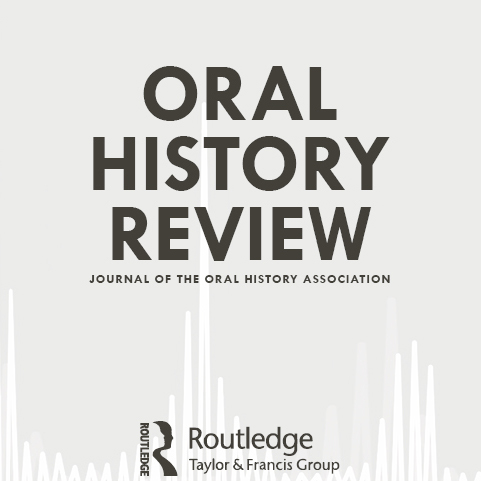A technophile embraces oral history in the digital age
By Steven Sielaff
Today we return to our ongoing series of oral history origin stories. We hear how Steven Sielaff found his way to the crazy mixed up world of oral history, and how his technophilia feeds into his love of oral history.
Since this is an oral historian origin story, I feel I need to begin this post with a bit of a confession. Even though I earned a bachelor’s degree in History from Baylor University, it was not until the summer of 2011, the term before I was to begin my graduate work at Baylor in the Museum Studies program, that I was introduced to oral history in general, and the stellar work and reputation of the Baylor University Institute for Oral History (BUIOH) in particular. Some years had passed since I was in the classroom, and I was looking for a way to get back into the flow when the history department chair suggested I look into BUIOH Director Stephen Sloan’s Seminar in Oral History course. Thankfully Stephen was in his office across the street, and after a brief discussion, I decided to sign up for the seminar.
There were only three of us in this summer session: myself and two young ladies wrapping up their master’s in secondary education. Almost from the start of the course I saw in the oral history profession many of the same characteristics that drew me to museum studies, namely a multidisciplinary nature that encourages eager young historians to “do” and “create” rather than simply read and research. The recent emphasis on oral history’s entry into the digital age also caught my eye, as I am quite the technophile (I always seemed to find myself as the token humanities lover among my circle of programmer/coder friends).
About a month into the seminar Stephen offered me an assistantship at the Institute working on various grant-funded projects, a position I would keep throughout my entire tenure in the Museum Studies program. It was pretty exciting to combine what I was learning in class with both my work at the Institute and my interest in museums. For my seminar project I conducted several interviews on the origin of the Dr Pepper Museum here in town (yes, we have a Dr Pepper museum, and yes, you should totally visit next time you are in Waco!). Meanwhile, as part of my job I created a web portal for a project funded by a local foundation entitled “For the Greater Good: Philanthropy in Waco.”
I will say here it is interesting to see just how much things have changed for us here at the Institute when it comes to online access and curation in the short five years I’ve been involved in oral history. As I pulled the “Philanthropy in Waco” pages into our brand new institutional website last month, I reflected on how many digital tools are available now for oral historians looking to share their work, and how differently I would build this website if I was to create it today. It was one of these tools that also helped sell me on oral history when, still as a graduate student, I was able to beta test the University of Kentucky Louie B. Nunn Center’s Oral History Metadata Synchronizer (OHMS). Working on adapting our transcripts to work within the OHMS system was exciting work and also translated into a panel presentation at my first OHA conference in 2013. It was at this conference I also served as editorial/social media assistant for the Oral History Review (OHR), thus beginning a relationship with the good folks at OHR that has already led to several reviews and blog posts.
As I wrapped up my master’s degree with a joint BUIOH-Museum Studies oral history project on the genesis of our university museum complex, I knew that I was leaning more toward a life in oral history than museums. Thankfully only a month after my graduation a temporary position became available at the Institute, and I began a new role in researching university history. During this time, however, I also immersed myself in the entire digital lifespan of oral history and learned all I could about the Institute’s accession and processing procedures, particularly our budding new digitization initiatives. When my mentor Elinor Maze announced in the fall of 2013 she would be retiring soon, I knew immediately that this opening, now appropriately weighted more toward the collections management aspect of the job, was perfect for me. Fortunately, Baylor agreed, and I began my current position as Senior Editor and Collection Manager of the BUIOH in the spring of 2014.
Honestly, I cannot imagine a more exciting time to be an oral historian when you consider the wealth of information that the digital age enables us to both discover and, in the case of digitization, rediscover. I feel tremendously blessed to be able to apply my talents at BUIOH to help open our collection to world, and I look forward to the tidal wave of information and innovation that is sure to come from our profession in the years ahead.
Miss the excitement of the #OHMATakeover? Follow our friends at the Oral History Masters program at Columbia University online at oralhistory.columbia.edu or visit their blog here. Add your voice the conversation by chiming into the discussion in the comments below, or on Twitter, Facebook, Tumblr, or Google+.
Featured image credit: “Technology, keyboard, computing” by Pixies, Public Domain via Pixabay.



Leave A Comment